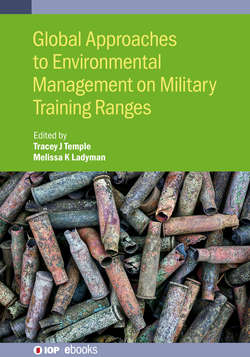Читать книгу Global Approaches to Environmental Management on Military Training Ranges - Tracey Temple - Страница 30
На сайте Литреса книга снята с продажи.
IOP Publishing Global Approaches to Environmental Management on Military Training Ranges Tracey J Temple and Melissa K Ladyman Chapter 2 Characterization of soils on military training ranges Michael R Walsh, Marianne E Walsh, Charles A Ramsey, Matthew F Bigl and Samuel A Beal
ОглавлениеThe characterization of military training ranges for energetics and metals is becoming more common as defense agencies work to preserve ranges and prevent the migration of potentially dangerous compounds into surface and ground waters and off installations. Past characterization efforts were plagued by unreliable and conflicting data, often resulting in flawed assessments and high clean-up liabilities [1, 2]. In the 1980s, a concerted effort was begun to characterize both training ranges and the munitions used on them with an emphasis on post-detonation residues containing energetics and other munitions-related constituents. These early efforts highlighted the shortcomings of the sampling and sample processing methods then in use. Through a comprehensive research program, the US Army Cold Regions Research and Engineering Laboratory and Envirostat, Inc., have developed methodologies for soil characterization that apply the theory of sampling and adapt methods developed in the mining and agricultural industries to the field of environmental sampling in general, and sampling for energetics on military training ranges in particular. This chapter describes the methods necessary to obtain reproducible range characterization data for soils. However, these sampling concepts have also been applied to surface water [3].
